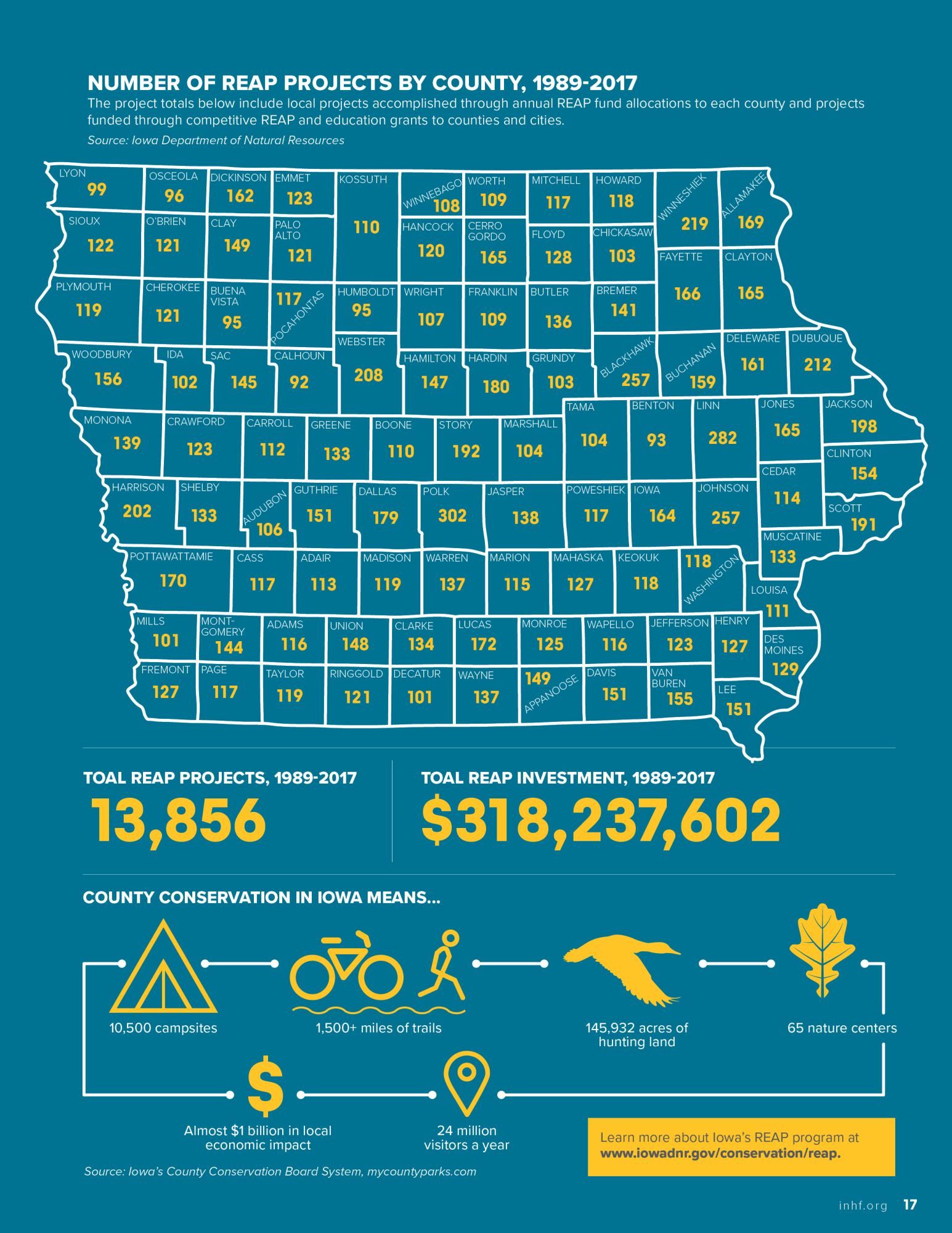REAP is Iowa's best conservation program
By Rowan McMullen Cheng on March 19, 2019 in Blog
In rural Iowa and beyond, county conservation boards and Iowa’s REAP program are bringing nature to Iowans.
If you’ve explored outdoors in Iowa, chances are you’ve been somewhere protected by a county conservation board, or CCB for short. CCBs are a vital resource to Iowans looking to discover the state — creating local, nearby nature opportunities, like pocket parks, hunting areas and environmental education activities in all 99 counties.
“The biggest thing is the diversity of opportunity that we have here,” said Jones County Conservation Board Director Brad Mormann. “We have everything from parks to trails to wildlife areas and river access.”
As some of the largest public landowners in their respective counties, many CCBs see accessibility to nature as a top priority, especially in rural areas where the DNR may not manage a lot of land. “We have to make sure people can enjoy it,” Mormann said. “People want access to nature, they want opportunity out there.”
“CCBs have the ability to be flexible in the types of land they protect, which leads to areas of high natural value being protected where there might not be much natural land around,” said Ross Baxter, INHF land projects director. “We love working with CCBs because they’re able to connect with local communities and partners, and engage a lot of people in the protection of land.”
With the help of the Resource Enhancement and Protection program, or REAP, CCBs have been able to count on yearly funding for outdoor recreation, land protection and environmental education for local and rural communities. REAP funds are allocated to each county annually based on population and additionally provide competitive grants for larger projects. Ultimately, this funding provides outdoor options that may not be possible otherwise due to cost or scale of the projects.
With over 13,000 projects since 1989, REAP has had a positive impact on every single county. Most counties have more than 100 conservation and cultural projects that have been helped by the REAP program in the last 30 years.
“REAP is what made most of those large [natural] areas possible through the granting program,” said Mormann, but “[REAP funding] has been dropping the last several years. Obviously, that’s going to have an effect on the types of projects we can do in the future.”
There’s no shortage of gems ready to protect across the state, but REAP funding is scheduled to sunset in 2021, leaving many CCBs feeling uncertain about their funding future.
“There’s no other real grant program that’s as wide reaching as what REAP does, especially for cities and counties,” said Tammie Krausman, REAP coordinator for the Iowa DNR. “There’s just no other option for them.”
“The impact REAP has had for Iowa’s local communities is almost immeasurable,” said INHF President Joe McGovern. “It has helped us and counties protect some of the most wild parts of the state. We hope to have it for many years to come.”
